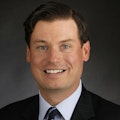How the dentist and dental hygienist compact can ease the dental workforce shortage
What you'll learn in this article
- 60 million Americans lack access to dental care
- The Dentist and Dental Hygienist Compact (DDHC) streamlines multi-state licensure
- 12 states have already joined the DDHC
- States retain control under DDHC
America does not have enough dental professionals to meet demand.
According to data from the US Department of Health and Human Services, nearly 60 million Americans live in dental health care professional shortage areas (HSPAs), which are communities without enough dentists to accommodate the population's dental health needs.1 This is important as research shows poor oral health has been linked to more serious medical issues, including diabetes, heart disease, and pregnancy/birth complications.2
Educating and training the next generation of dental care practitioners is a key part of solving the dental workforce shortage, but families living in dental deserts cannot afford to wait for the next batch of graduating dentists to fill in these gaps. Without enough dentists in our communities, patients are forced to wait weeks or sometimes months before being able to see their dentist for routine care. Some skip treatment altogether, which can sometimes lead to more serious dental or other health problems. Fortunately, there are other steps that can be taken to alleviate the impact of the shortage. One of the most effective is for states to join the Dentist and Dental Hygienist Compact (DDHC).3
The role of the DDHC
The DDHC allows dentists and dental hygienists who are licensed in any member state to practice in all other compact-participating states-i.e., after a dentist or dental hygienist is licensed in one member state, they can obtain compact privileges in each additional state they wish to practice in. To be clear, these privileges are not the same as automatic licensure and would not jeopardize the quality of care delivered to patients. Rather, the DDHC streamlines the licensure process for highly skilled, highly experienced, out-of-state licensed practitioners, reducing administrative costs and hurdles and helping providers reach the communities that need them the most.
While the DDHC provides additional flexibility for practitioners, each participating state still has control over licensing requirements and is allowed to require additional licensing and certification for specific procedures, such as administering general or local anesthesia.
The DDHC also allows states to maintain their own licensing requirements. Other compacts establish interstate governing commissions that are too centralized and limit the role of state regulators while mandating specific licensing requirements for members. In contrast, the interstate governing commission established by the DDHC consists of representatives from compact-participating states, ensuring the compact adheres to their respective states' standards and requirements.
Making a change
By eliminating redundant barriers to entry, the DDHC gives providers the freedom to practice in different states and incentivizes them to expand their operations. And when dental practices expand into dental deserts like rural and tribal communities where they are most needed, it helps fill the gap created by the workforce shortages.
Interstate licensure compacts across various industries, including in the medical field, are not a novel concept. Driven in part by a desire to support telehealth, the Interstate Medical Licensure Compact (IMLC) streamlines the process for licensed doctors to be able to practice in participating states. Today, the IMLC has 39 member states, with two more recently passing legislation to join the compact.1
The DDHC has the support of a wide swath of the dental industry, including the ADA, the American Dental Education Association (ADEA), ADHA, the Coalition for Modernizing Dental Licensure (CMDL), and the Association of Dental Support Organizations (ADSO). ADSO members operate in practices across the country, addressing the dental workforce shortage-particularly in underserved communities.
The ADSO hears too often from its members and affiliated dentists they work with about the growing strain on America's dental workforce and how it's affecting patients and providers alike. That's why the organization has made advocacy for the DDHC a top priority, and they're proud of the progress they've made so far in working closely with state lawmakers, regulators, and partners across the country to advance this commonsense solution.
Today, state legislatures in 12 states have passed legislation authorizing states to join the DDHC, with many more considering similar legislation. There is clearly a strong appetite to tackle the dental workforce shortage through this compact. As one of the leading voices championing this compact, the ADSO will continue pushing for action in the remaining states.
To make progress on the national dental workforce shortage, lawmakers need to act quickly to join the DDHC. Right now, one in six Americans do not have access to essential dental care.1 States joining the DDHC can open themselves up to qualified, licensed dentists and provide more services to Americans who would otherwise forgo dental care.
The DDHC won't be the magic bullet that solves America's dental workforce shortage, but it is an immediate step to improve access across the nation.
References
-
Health workforce shortage areas. Health Resources & Services Administration. Updated June 24, 2025. https://data.hrsa.gov/topics/health-workforce/shortage-areas?hmpgdshbrd=1
-
Dental and dental hygienist compact. 2025. https://ddhcompact.org/
-
Oral health: a window to your overall health. Mayo Clinic. March 14, 2024. https://www.mayoclinic.org/healthy-lifestyle/adult-health/in-depth/dental/art-20047475
About the Author

Andrew Smith
Andrew Smith is CEO of the Association of Dental Support Organizations (ADSO), a nonprofit organization dedicated to supporting its members, enabling supported dentists to focus on patient care, expand access to quality dental services, and improve the oral health of their communities. The ADSO represents DSOs to the public, policymakers, and the media.
